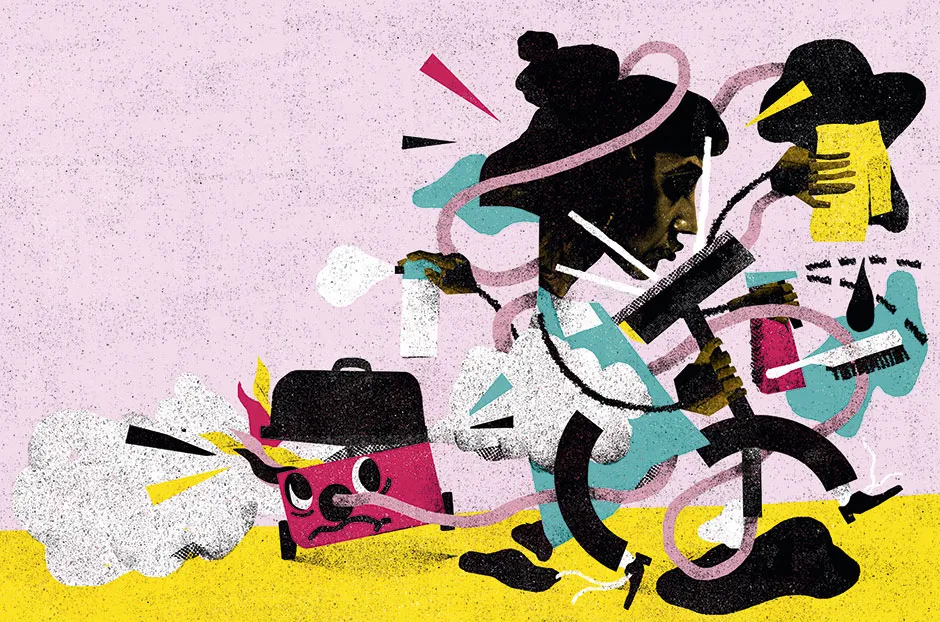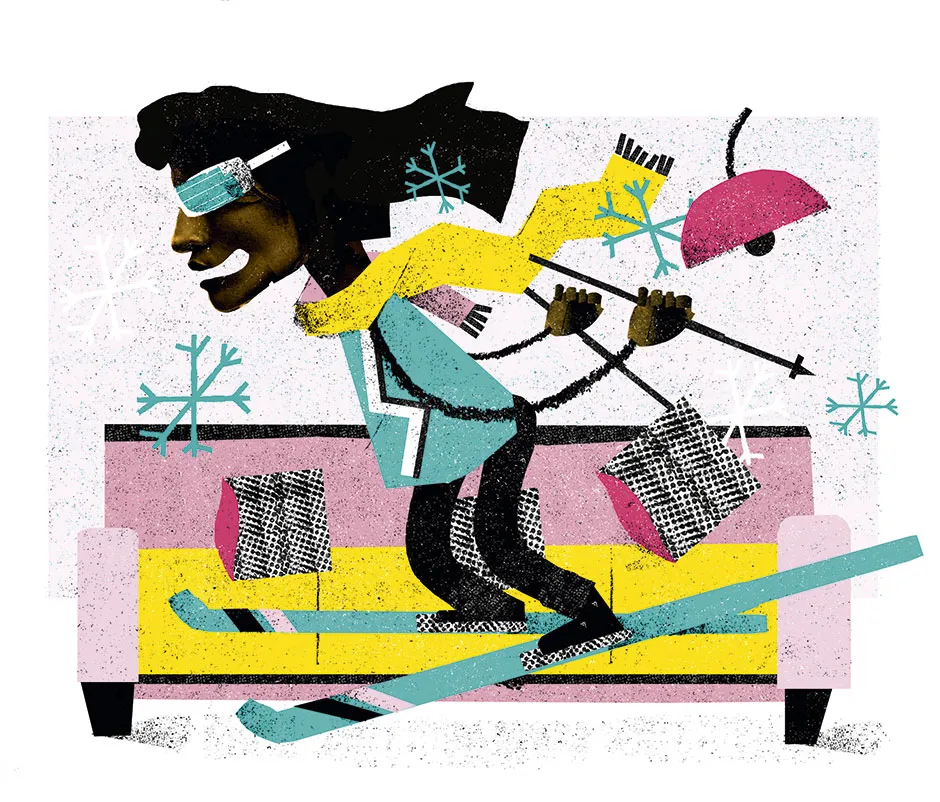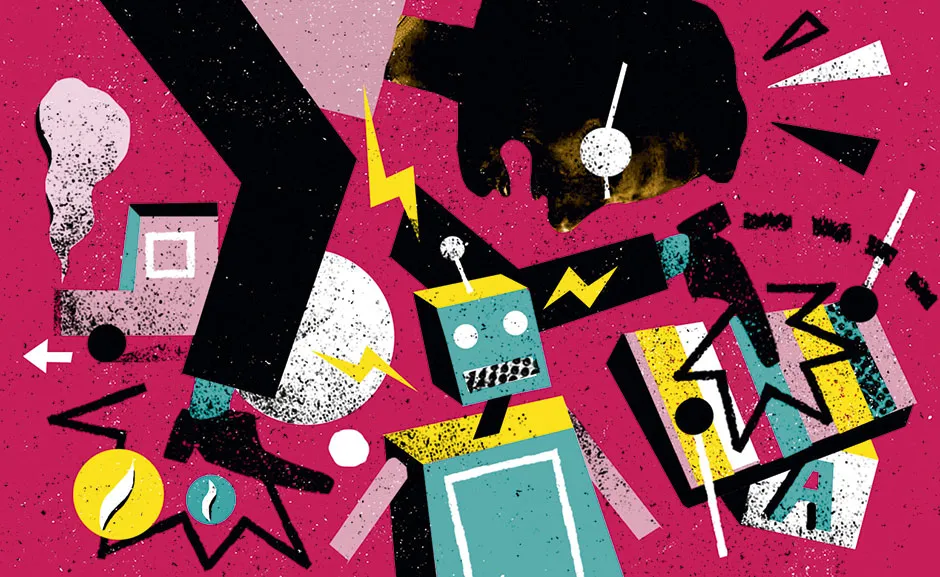Winter can suck the wind from our sails in the best of years, but this is not just any winter – it’s a pandemic winter. This doesn’t necessarily mean it will be worse than ever. Life can be gloriously contrary and you might end up having a pleasant, cosy time.
But there’s no denying that, even among those who aren’t grieving or recovering from infection, COVID burnout is real and as contagious as the virus itself. No one should beat themselves up about feeling fatigued right now.
Burnout was already doing a swift trade before the pandemic came along, steadily spreading as technology allowed everyone to carry their inboxes in their pockets. The term was even added to the World Health Organization’s International Classification of Diseases in 2019, listed as the result of “chronic workplace stress that has not been successfully managed”.
Symptoms include a sense of “energy depletion or exhaustion... increased mental distance from one’s job… negativism or cynicism related to one’s job” and feeling less efficient and effective at doing said job. That wading-through-treacle sensation feels painfully familiar right now.
COVID burnout, however, is a new version, peculiar to these uncharted pandemic times. 2020 was the year in which our homes became our offices, our schools, and at times felt like our prisons. The lines between work and leisure blurred, without even our daily commutes to bookend business hours. Uncertainty ruled, and the grim compulsion to stay on top of coronavirus-related news felt like a full-time job in itself.
But pandemic burnout is too novel to warrant its own statistics or entries in medical books. The Office of National Statistics can tell us, however, that the proportion of adults reporting psychological distress jumped from 24.3 per cent in 2019 to 37.8 per cent in April 2020, and that sleep problems increased by 9 per cent last year, with young adults and women most likely to report worse wellbeing.
No matter how exhausted you are, or how impossible and unappealing your to-do list may seem, be armed with the knowledge that you are not necessarily doomed to stagnate until conditions improve. Positive steps can be taken at any time to fend off burnout and feel better. And once you’re out on the other side, it’s entirely possible that you will be stronger for your struggles – a phenomenon called post-traumatic growth.
Read more about burnout:
Maintain your social support group
One of the greatest challenges of imposed isolation has been feeling cut off from friends and colleagues. When life is overwhelming, it’s easy to let efforts to connect slip. But Dr Steven Southwick, professor of psychiatry at Yale Medical School, says that maintaining relationships should be a top priority right now.
“The fundamental need to belong is hardwired into our nervous system,” he says. “In fact, from a neurobiological standpoint, exclusion, rejection or isolation can activate the sympathetic [fight or flight] nervous system just like any fear response.
"Adrenaline, noradrenaline, cortisol, all of these stress hormones can get activated purely by social isolation.” It turns out, he says, that some of the same areas of the brain that are activated during physical pain are also activated during social pain.
On the other hand, says Southwick, positive social support can quieten the fear response. “When people are cooperating with one another, you can see activation of reward centres in the brain,” he explains. Social connectedness releases oxytocin, too, which also “quiets anxiety through a variety of mechanisms.”

In May 2020, Southwick wrote a paper for the journal JAMA Psychiatry stating the loss of social connectedness at work – spending increasing periods on screenwork, a loss of camaraderie with little time to talk with peers, running from one task to the next – is a major contributor to the burnout experienced by physicians. But he says the same is true for anyone overwhelmed by pandemic life.
Ask yourself, suggests Southwick, “How many friends, colleagues, family members, do you have that you could call at any time? Similarly, how many people would you help at the drop of a hat?”
According to a study published in 2003 in the journal Psychological Science, giving social support can be even more protective than receiving social support.
Another key problem with burnout is a loss of agency. Southwick says that the more positive social connections youhave, the more meaningful your life feels. “While you’re locked down, and social distancing, it’s important to take the time to say, ‘Well, what is my purpose? How can I advance my purpose, even during this difficult time?’”
Control what you can
Social connection can even enhance your problem-solving abilities in challenging times. Some of the most effective coping mechanisms are those that are activated in the throes of stressful moments to lessen any negative effects. This is known as ‘active coping’ as opposed to ‘passive coping’.
“If you have a strong social network, you tend to use more active coping, because you know somebody has your back,” says Southwick.
The disempowering feeling of not having control over your situation is another common burnout contributor. “We often think of stress as being bad, but it’s not necessarily bad,” says Southwick. “What makes it toxic is when we believe that we cannot control the stress.”
Read more about coping with lockdown:
- 10 science-backed tips to help you work from home successfully
- 5 home workout apps for your socially-distanced exercise
- Box sets and comfort food might make you feel better, but a few routines could help keep your body happy
An active coping strategy here would be to sit down and assess just what you can and can’t control. “I can’t control the fact that the virus is here, but I can control how I respond to it,” he says.
“It’s very powerful to accept that which is out of your control, and to work on that which is in your control. You can try to manage the inflow of negative information. You can follow evidence-based advice from trusted sources. You can share your concerns and fears with trusted colleagues.”
Likewise, he says, you can try relaxation techniques, from breathing to mindfulness, which engage the parasympathetic nervous system. You can ask yourself, ‘is there something that I can learn from this experience?’. If possible, Southwick says you can try to reframe this horrible situation as a challenge.
The increasingly popular notion of eustress, or beneficial stress, can be useful here. A certain degree of stress is necessary to help you grow, just as putting a stress on your body by lifting weights builds up muscle. Unlike damaging, chronic stress, eustress is this kind of healthy stress, but sometimes the same stressors involved in chronic stress can be reframed as eustress. Taking simple steps to train a more positive outlook can help with this.
Clinical psychologist Linda Blair is an expert in helping people out of the doldrums. “When you’re so tired and fed up that you can’t carry out the activities that either you’re required to carry out or that you really want to carry out, then I would say that burnout is official,” she says.
“Sometimes, a really good thing to do is to mentally fly over the pile of rubbish which is right now. On the other side is stuff you didn’t know was there.” Dreaming about possibilities, such as holidays, when this is all over can be deeply soothing. “Research shows without a doubt that the happiest aspect of a holiday is the planning,” she says.

Show yourself some kindness, she continues. “Congratulate yourself that you have coped so well for so long. You need to give yourself a lot of slack for how tired you are.”
And then focus on instilling some healthy routines. “If you can accomplish just one small thing each day, whether it’s making a nicer dinner than you normally would, or calling a friend, and exercise within whatever your limits are, then you will maintain an equilibrium.”
Avoiding sugar should help your energy levels, says Blair, and avoid alcohol if possible. Alcohol is a depressant after the initial relaxation.
But there’s nothing wrong with seeking escapism in box sets per se. “Distraction is great because it gives you a temporary break, but don’t just choose any old box set that you know well. You need one that challenges your mind a little bit.”
This is not, however, an open invitation to surrender into couch-potato life. Sneak in a bit of stand-up viewing, or even do a few press-ups. “It’s easy and small doses add up,” she says.
To swing your default mental setting back from negative to positive, Blair recommends the evidence-based practice of creating an evening routine that involves either writing down any goals that youhave accomplished, or asking two simple things: who am I grateful to, and what am I grateful for today?
It takes about four or five weeks for the effects to bed in, she says, but it’s worth it. Benefits can include a boost in happiness, reduction in anxiety and depression, and improved sleep.
Move more
Naturally, both Blair and Southwick are adamant that exercise is essential for busting out of burnout. When you’re feeling too tired to lift a finger, exercise could be your ticket out of this purgatory because it will improve how energetic you feel.
“Rather than being an argument to avoid activity, your perceived exhaustion should be an argument to be active, because we know that it will increase your subjective energy,” says Dr Boris Cheval, a health neuropsychologist at the Swiss Centre for Affective Sciences in Geneva.
Cheval and colleagues made headlines in 2018 when they identified how we are wired to conserve energy, and, in the name of efficiency, have a nice sit down whenever possible. Their small study, published in the journal Neuropsychologia, used electrodes to measure volunteers’ brain activity and found that even if we have great plans to be active, our brains appear to be attracted to being sedentary.
So firstly, do not feel like you’re a failure or a wimp for skipping exercise. Even the act of egging ourselves on to being active is mentally tiring. “You need to activate your brain to counteract your tendency to be inactive,” says Cheval.

The good thing is, with practice, we can override this negative impulse. Through his studies on the impediments to exercise, he has learned that you’re more likely to get out there if you like the activity, and you don’t feel under pressure to do it. A common stumbling block is picking something too hard, which will leave your brain with negative associations.
“If you choose a low-to-moderate intensity exercise, this will be associated with positive affective experience, which will increase the likelihood of maintaining and repeating the behaviour,” he says. He refers to this result pleasingly as a virtuous circle, as opposed to a vicious circle. As a guide, he says, activities that still allow you to speak while doing them work best.
Another strategy to bypass what Cheval calls “sedentary temptation” is to use implementation intentions to automatically activate your chosen healthy behaviour. If you want to go for a hike tomorrow morning, for example, then leave your raincoat and boots by the door. It’s simple, and it works.
Sometimes, no matter how much exercise or positive action you take to cope with mounting challenges, your brain can simply become overloaded – be it with extra work to cover for sick colleagues or all the added responsibilities that the coronavirus has thrown at us.
But there is a surprising hidden benefit to being in this overloaded state. In 2015, experimental psychologists at the University of Nice Sophia-Antipolis published a paper in the journal Cognition that found that mental exhaustion can boost creative thinking, by loosening your inhibitions. Eccentric, free-flowing ideas that our over-sensible alert brains might filter out are allowed to surface. So there’s another reason not to panic about feeling exhausted.
There is both light at the end of the tunnel, and even glimmers within it if you look for them.
- This article first appeared inissue 359ofBBC Science Focus Magazine–find out how to subscribe here